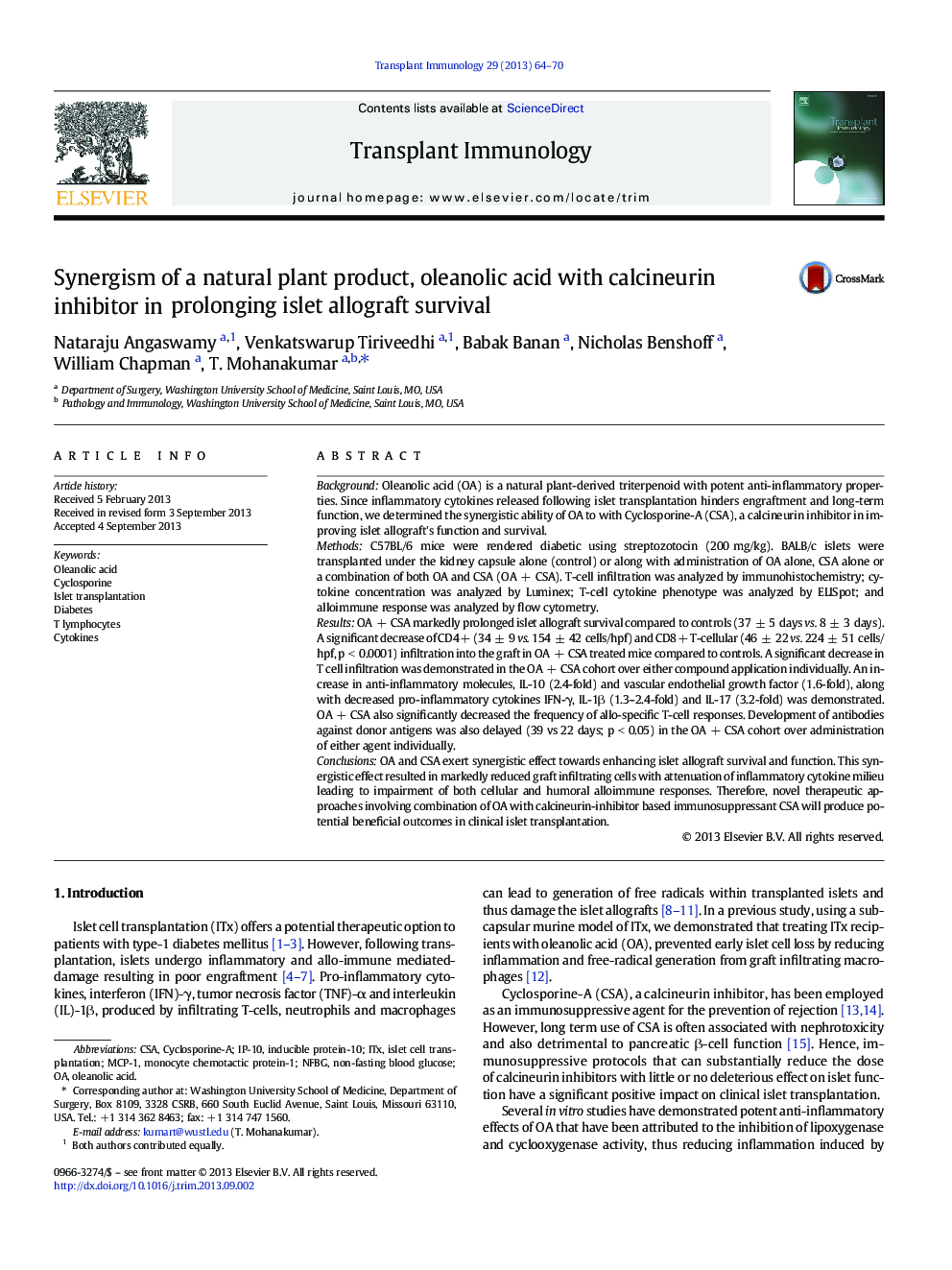| Article ID | Journal | Published Year | Pages | File Type |
|---|---|---|---|---|
| 6126031 | Transplant Immunology | 2013 | 7 Pages |
â¢Synergestic effects of OA & CSA in improving model of islet allograft survival.â¢OA+CSA decreased donor specific IFN-γ, IL-4 & IL-17 secreting cells.â¢Cytokine changes following OA+CSA is associated with favorable islet Tx.â¢Decreased infiltration of CD4+ & CD8+ T-cell following OA+CSA treatment.â¢OA+CSA synergistically delayed development of Abs against donor allo-antigens.
BackgroundOleanolic acid (OA) is a natural plant-derived triterpenoid with potent anti-inflammatory properties. Since inflammatory cytokines released following islet transplantation hinders engraftment and long-term function, we determined the synergistic ability of OA to with Cyclosporine-A (CSA), a calcineurin inhibitor in improving islet allograft's function and survival.MethodsC57BL/6 mice were rendered diabetic using streptozotocin (200 mg/kg). BALB/c islets were transplanted under the kidney capsule alone (control) or along with administration of OA alone, CSA alone or a combination of both OA and CSA (OA + CSA). T-cell infiltration was analyzed by immunohistochemistry; cytokine concentration was analyzed by Luminex; T-cell cytokine phenotype was analyzed by ELISpot; and alloimmune response was analyzed by flow cytometry.ResultsOA + CSA markedly prolonged islet allograft survival compared to controls (37 ± 5 days vs. 8 ± 3 days). A significant decrease of CD4 + (34 ± 9 vs. 154 ± 42 cells/hpf) and CD8 + T-cellular (46 ± 22 vs. 224 ± 51 cells/hpf, p < 0.0001) infiltration into the graft in OA + CSA treated mice compared to controls. A significant decrease in T cell infiltration was demonstrated in the OA + CSA cohort over either compound application individually. An increase in anti-inflammatory molecules, IL-10 (2.4-fold) and vascular endothelial growth factor (1.6-fold), along with decreased pro-inflammatory cytokines IFN-γ, IL-1β (1.3-2.4-fold) and IL-17 (3.2-fold) was demonstrated. OA + CSA also significantly decreased the frequency of allo-specific T-cell responses. Development of antibodies against donor antigens was also delayed (39 vs 22 days; p < 0.05) in the OA + CSA cohort over administration of either agent individually.ConclusionsOA and CSA exert synergistic effect towards enhancing islet allograft survival and function. This synergistic effect resulted in markedly reduced graft infiltrating cells with attenuation of inflammatory cytokine milieu leading to impairment of both cellular and humoral alloimmune responses. Therefore, novel therapeutic approaches involving combination of OA with calcineurin-inhibitor based immunosuppressant CSA will produce potential beneficial outcomes in clinical islet transplantation.
